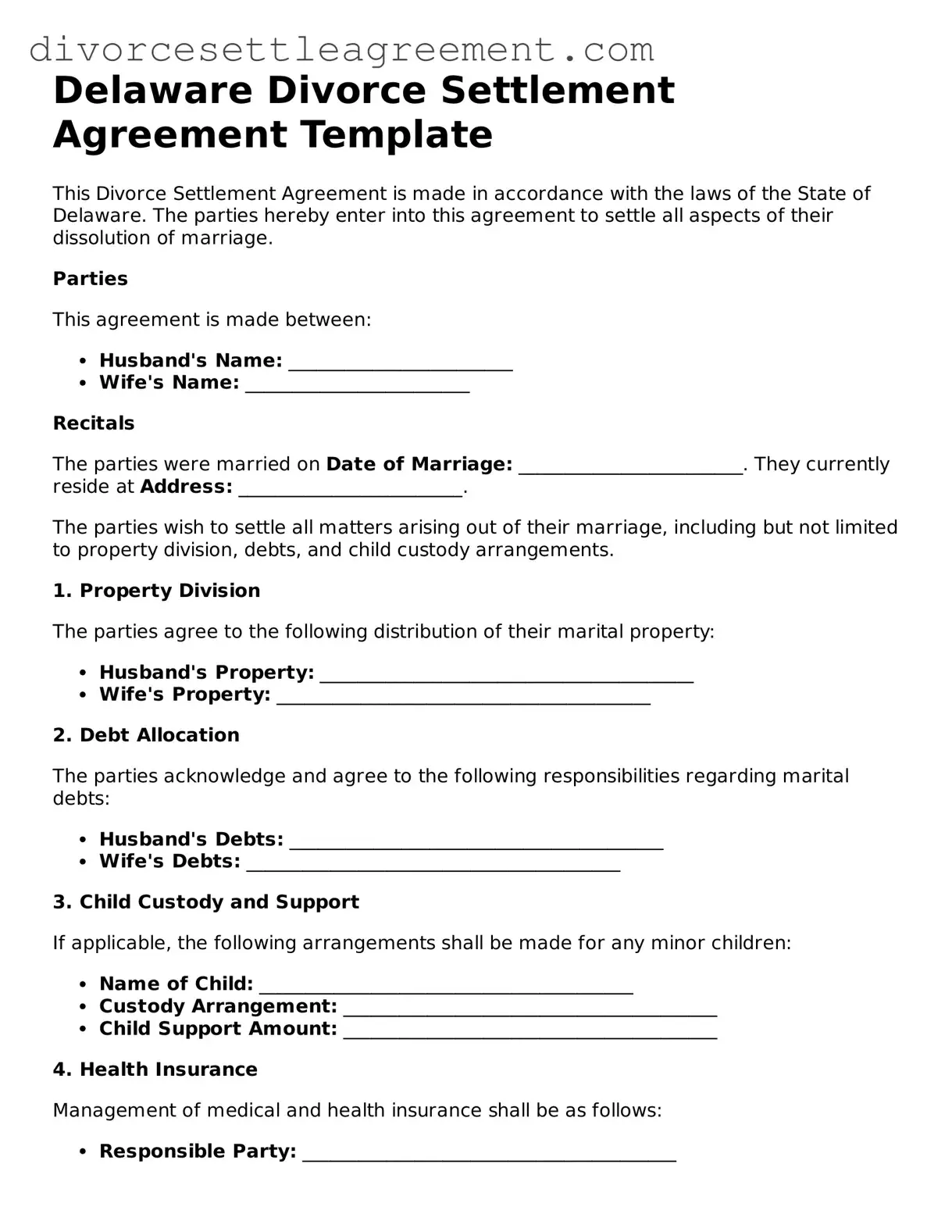When filling out the Delaware Divorce Settlement Agreement form, many people overlook crucial details that can lead to complications. One common mistake is failing to provide accurate personal information. This includes names, addresses, and dates of birth. Inaccuracies can delay the process and may require additional legal steps to correct.
Another frequent error is not being specific about the division of assets. Vague descriptions can lead to misunderstandings later on. It's essential to clearly outline what each party is entitled to, including property, bank accounts, and personal belongings.
People often neglect to address debts in the agreement. Ignoring this can create future disputes over who is responsible for outstanding bills or loans. A clear statement regarding how debts will be managed is vital for a smooth transition post-divorce.
Some individuals mistakenly believe that child support and custody arrangements are optional. This is not the case. Courts require these details to be included in the settlement agreement to ensure the welfare of the children involved. Omitting this information can result in delays or even a court-mandated arrangement.
Another mistake involves failing to account for tax implications. Many overlook how asset division can impact taxes. Consulting a financial advisor or tax professional can help avoid unexpected tax liabilities after the divorce is finalized.
People sometimes forget to include a provision for future changes. Life circumstances can change, and having a clause that allows for adjustments in support or custody arrangements can prevent future legal battles.
Inadequate signatures and dates can invalidate the agreement. All parties must sign and date the document appropriately. This step is often rushed or overlooked, leading to complications in enforcement.
Some individuals do not seek legal advice before submitting their agreements. While it may seem straightforward, having a legal professional review the document can help identify potential issues and ensure that all necessary elements are included.
Another common error is not keeping copies of the signed agreement. After finalization, both parties should retain copies for their records. This is essential for future reference and can be critical if disputes arise later.
Lastly, people sometimes underestimate the importance of reviewing the agreement thoroughly before submission. Rushing through the process can lead to missed details and errors that can complicate the divorce proceedings. Taking the time to carefully review the document can save significant time and stress down the line.
